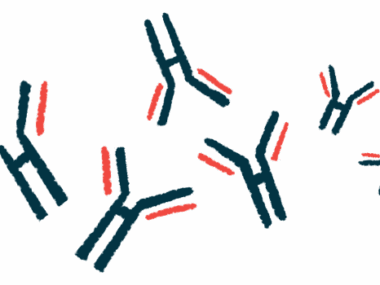Myozyme found safe, given mostly in outpatient setting in real world
Findings support potential for at-home infusions
Written by |

In patients with Pompe disease, treatment with Myozyme (alglucosidase alfa) is most often administered in outpatient settings and is rarely associated with adverse reactions.
That’s according to real-world data spanning a little more than seven years in France. The treatment is marketed as Lumizyme in the U.S.
Overall, “these findings do encourage the use of Myozyme infusion mainly as an outpatient or as home-based treatment,” researchers wrote in a study, “Real-world data of in-hospital administration of alglucosidase alfa in French patients with Pompe disease: results from the National Claims Database,” published in the Journal of Neurology.
Pompe disease is caused by mutations in the GAA gene that result in low to no levels of working acid alpha-glucosidase (GAA), which is an enzyme that breaks down a large sugar molecule called glycogen. Without a functional enzyme, glycogen builds up to toxic levels in tissues, particularly in muscles. This causes a range of symptoms that can show up in the first year of life (infantile-onset) or later in life (late-onset).
Myozyme provides lab-made version of human GAA enzyme via infusions
Myozyme is an enzyme replacement therapy approved for Pompe since 2006 in Europe and since 2010 in the U.S. The treatment provides a lab-made version of the human GAA enzyme via regular intravenous (into-the-vein) infusions. Although the benefits of Myozyme are well-documented in clinical trials, real-world data are still limited, particularly in areas of safety.
To learn more, scientists in France examined the clinical records of patients whose hospital admissions were related to Myozyme treatment. The records, spanning hospitalizations from April 2012 to December 2019, were retrieved from the Programme de Médicalisation des Systèmes d’Information, a large database in France with more than 25 million records annually.
The researchers focused particularly on patients admitted to critical care, meaning admission to the intensive care unit, or the need for emergency life support, and the rate of adverse events.
In total, during the study period, 239 patients (126 female; mean age of 39.8 years) were given Myozyme, corresponding to 26,714 hospital stays. The majority (96.6%) were treated as outpatients (hospitalization of less than one day). The length of hospital stays without the need for critical care admission increased from 96% in 2012 to 99% in 2019.
Among the 997 critical care admissions for Myozyme-treated patients, 781 (78.3%) occurred on the day or the day after Myozyme infusion. None of these admissions were associated with adverse reactions to Myozyme. In fact, 709 of the 781 admissions (90.8%) following Myozyme treatment were from 11 patients who were hospitalized to receive chemotherapy. The number of admissions to critical care soon after Myozyme infusion decreased sharply from 141 admissions in 2016 to 30 in 2019.
Nearly 90% of admissions to critical care immediately after Myozyme treatment were in an outpatient setting, and in 75% of the cases, the infusions were kept as scheduled. Four patients (0.5%) stopped treatment. No deaths were reported among patients receiving regular enzyme replacement therapy in critical care.
Low rate of adverse reactions
Of the 26,714 hospital stays, 10 (0.04%) were deemed related to adverse reactions to Myozyme. Six of them were treated as outpatients, and no patient needed to be moved to critical care. Myozyme was resumed within an average of 17.4 days.
Overall, “it can be concluded that the present analysis provided evidence that the administration of Myozyme over a long period in the hospital setting was mainly as an outpatient and rarely associated with adverse reactions and complications,” the researchers wrote.
While the findings support the potential infusion of Myozyme at home, “further studies are definitely warranted to support if home infusions would be safe,” they concluded.
Of note, three of the researchers are employees of Sanofi, which markets the treatment.






